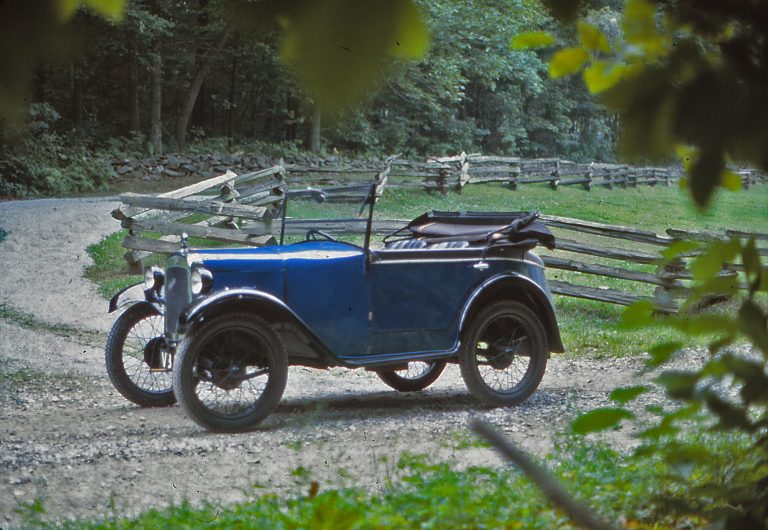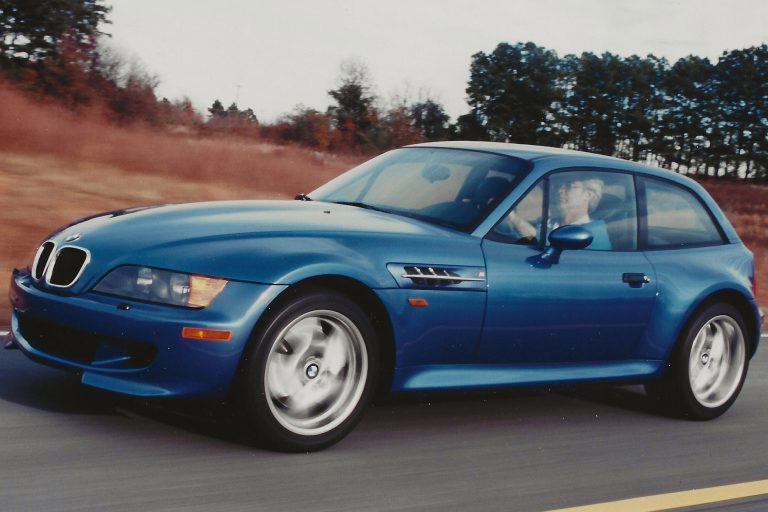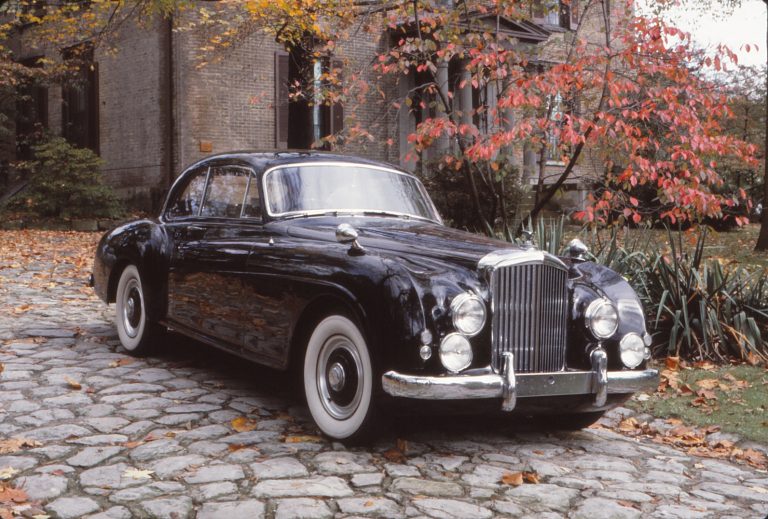History originally published in AutoWeek, February 28, 1983
It was a fitting motorcar for the professional, this new BMW 321, a good choice for the man of accomplishment. It was August, 1939, and to be able to afford such an impressive automobile was a sign of having arrived at that certain station in life – not rich, but comfortable. To own a car at all in Germany in those times was a luxury.
In 1939, BMW was more known for motorcycles and airplane engines than sporty cars. The firm was big and successful. Nearly 27,000 people were on payroll. BMW motorcycles won 491 gold medals that year. To buy a BMW automobile was to be inspired by the motorcycles. And Robert Vogel, an engineer from suburban Frankfurt, bought a new 321 that August.
The car was one of BMW’s most popular prewar models. Introduced early in 1939, it succeeded the 320/329/319 series. As with its other BMW contemporaries, it was based on a massive box-section ladder-frame with transverse leaf front suspension, and with a live axle on torsion bars at the rear. The engine was the firm’s 1971 cc in-line six. The standard I-head version was equipped with a single Solex side-draft 30 BFLVS carburetor. Power output was 45bhp at 3750 RPM.
Top speed was 68 MPH. There were BMWs that could go faster, on the new autobahns, such as the hemi-head 328 racer, good for over 90 mph, or the sporty 327, capable of nearly 80. But the 321 (as well as a larger, twin-Solex equipped 326 – capable of just over 70 mph), what about as fast as the average burgher would want to go.
The 321 was offered in sedan or cabriolet versions, the open car carrying a 20-percent price premium. Either way, the car was a two-door, four-seater. Even in the cabriolet, backseat legroom was adequate: The thickly padded top (fitted with a dome light) folded back high on the body work. No interior room was sacrificed but the rear view mirror had to be pivoted above the windshield for rear vision. Herr Vogel likely anticipated weekend jaunts in his new cabriolet. Most Germans use an automobile, if they owned one, for pleasure only. Commuting to work was by foot, bicycle or public transportation. And better times were ahead for Germany, or so most Germans believed at the time. Even if one were not enthusiastic about the course Germany was following, one could still go about life normally.
Germany was regaining her rightful place as a world power, regaining her place in the sun. England’s Neville Chamberlain had proclaimed “peace in our time” and that Russian-German pact was just signed. One could believe as one wished: Germany was at peace, or Germany was soon to conquer the world. Either way, purchasing the cabriolet seemed a secure investment for Robert Vogel.
Then, on September 1, 1939, the soldiers of the Third Reich invaded Poland. England and France declared war on Germany on September 3. Shortly thereafter, sale and delivery of private automobiles were forbidden by the government. Privately-owned vehicles, especially four seat cabriolets such as Vogel’s, were to be confiscated unless the owner could justify retaining them. Those who could were awarded a license plate with a red chevron.
In the waning days of the Third Reich, another confiscation was made, this time with fewer exceptions. Vogel, either at the beginning or end of the war, concealed his 321 in the basement garage of his home.
The building was leveled by Allied bombing, it was not a direct hit. The basement ceiling held, safely entombing the cabriolet in the rubble. It stayed there for the duration. Even after the war ended, the car remained hidden for a year. Only when Vogel no longer feared confiscation by the occupying forces did he register the car.
Vogel drove the car from July, 1946, until 1959, when he sold to an American serviceman who brought it home with him. Sometime before that, the engine had been refitted with double updraft 26BFLV carburetors, effectively converting it to 326 specs. Power was increased from 45 to 50 BHP. The car was sold in 1974 to its current owner, Lothar Schuttler, who had himself come over from Germany in 1968.
One steps up into Schuttler’s 321. The seats are high, the massive frame dictates a high floor. The split windshield is tall and permits a good view over the tapering hood. Vision to the rear, though, is limited by the minuscule split rear windows, or by the folded top when it is down. The large triple-spoked steering wheel frames the dash, the speedometer rotating clockwise but starting at one o’clock.
The car starts with the key and separate starter button. The sound is vintage six, with carburetors and tappets coming through. This is no modern, twitchy light-flywheel engine. It’s a solid, sober power plant, almost truck -like. That impression is reinforced by the yard-long shifter and non-synchro gearbox. It feels more like a 1959 coal hauler than a conveyance for the upper-middle-class.
The clutch takes up smoothly, however, and the car demonstrates adequate performance even for today’s standards. The ride is smooth, a function of the rigid frame and the well thought out suspension, the rear half of which continues in use until today in Bristols.
Accommodations must be made, however. Remember to shift slowly enough for the cogs to match speed for crunchless gear changes. Prepare for the peculiar sway through the turns (it feels as if the steering is done by the rear suspension), accentuated by the car’s height.
Production of the BMW 321 continued into 1941, before increased war effort ended it. The 321 survived, though not as a BMW. Production facilities at Eisenach fell behind Russian lines, and the name became EMW. All the Eisenach 321’s carried the blue and white emblem, and were even called BMWs by the makers. As BMW employees before the war, they considered themselves continuing the tradition. The Western Sector BMW wasn’t able to get the Eastern Sector to change the name until the early 1950s.
Production of the EMW 321 ceased in 1949. None had been made in the West since the war, when other new models were introduced and produced. Strangely enough, the sporty car offspring of Europe’s most successful motorcycle builder, the fitting motorcar for the successful burgher, had become transportation for party functionaries, bureaucrats and government institutions. Eisenach was part of the Deutsche Demokratische Republic, D.D.R., the Soviet East German Republic.















